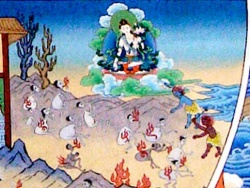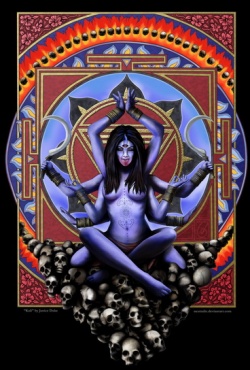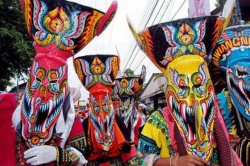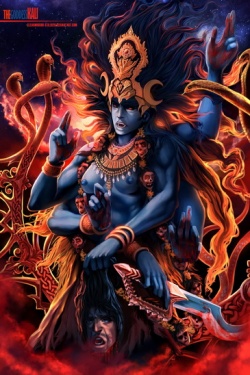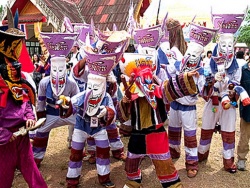The Buddhas Prophecy
THE seventh volume of the Lotus Sutra states, “After I have passed into extinction, in the last fivehundredyear period you must spread it [the Lotus Sutra) abroad widely throughout Jambudvipa and never allow it to be cut off.”1 On the one hand, it is deplorable to me that more than 2,220 years have already passed since the Buddha’s demise. What evil karma prevented me from being born in his lifetime? Why could not I have seen the four ranks of sages in the Former Day of the Law, or T’ien-t’ai and Dengyo in the Middle Day of the Law? On the other hand, I rejoice at whatever good fortune enabled me to be born in the last five-hundred-year period and to read these true words of the sutra.
Even if I had been born in the Buddha’s lifetime, it would have served no purpose, for those who embraced the four flavors of teachings had not yet heard of the Lotus Sutra. Again, my being born in either the Former or the Middle Day of the Law would have been meaningless, for neither the scholars of the three schools of the south or the seven schools of the north [in China), nor those of the Flower Garland, True Word, or any other schools, believed in the Lotus Sutra.
The Great Teacher T’ien-t’ai states, “In the last five-hundred-year period,
the mystic way will spread and benefit humankind far into the future.”2 Does this not describe the time of wide propagation?? The Great Teacher Dengyo says, “The Former and Middle Days are almost over, and the Latter Day is near at hand.”3 These words reveal how much he longed for the beginning of the Latter Day of the Law. If we consider the rewards of living in the different ages, it is clear that mine surpass those of Nagarjuna and Vasubandhu, and excel those of T’ien-t’ai and Dengyo.
Question: You are not the only person living in this “last five-hundred- year period” ; why are you in particular so overjoyed to be living now?
Answer: The fourth volume of the Lotus Sutra reads, “Since hatred and jealousy toward this sutra abound even when the Thus Come One is in the world, how much more will this be so after his passing?”4 The Great Teacher T’ien-t’ai states, “It will be much worse in the future because the principles [of the Lotus Sutra) are so hard to teach.”5 The Great Teacher Miao-lo explains, “The purpose of the phrase ‘the principles are so hard to teach’ is to let us know how hard it is to enable people to understand these principles.”6 The Dharma Teacher Chih-tu states: “It is said that good medicine tastes bitter. This sutra, which is like good medicine, dispels attachments to the Composed by the shramana Nichiren
five vehicles and establishes the one ultimate principle. It reproaches those in the ranks of ordinary beings and censures those in the ranks of sagehood, denies [provisional] Mahayana and refutes Hinayana. . . . That is why all these types of people try to make hindrances [for a practitioner of the Lotus Sutra).”7 The Great Teacher Dengyo states: “Speaking of the age, [the propagation of the true teaching will begin] in the age when the Middle Day of the Law ends and the Latter Day opens. Regarding the land, it will begin in a land to the east of T’ang and to the west of Katsu. As for the people, it will spread among people stained by the five impurities who live in a time of conflict. The sutra says, ‘Since hatred and jealousy toward this sutra abound even when the Thus Come One is in the world, how much more will this be so after his passing?’ There is good reason for this statement.”8 The Great Teacher Dengyo seems to be describing his own day, but actually he is referring to our present time. His words “The Former and Middle Days are almost over, and the Latter Day is near at hand” have just such a meaning.
The sutra states, “Evil devils, the devils’ people, heavenly beings, dragons, yakshas, kumbhanda demons, and others will seize the advantage.”9 Another part of the sutra details these “others” : “Whether it be a yaksha, or a rakshasa, or a hungry spirit, or a putana, or a kritya, or a vetada, or a skanda, or an umaraka, or an apasmaraka, or a yaksha kritya, or a human kritya . . .”10 These passages explain that those who in previous lifetimes embraced the four flavors and three teachings, non-Buddhist teachings, or doctrines concerning the realms of human and heavenly beings appear in this life as devils, or heavenly or human beings who persecute the votary of the true and perfect teaching when they see or hear of him.
Question: In comparing the Former and Middle Days with the Latter Day of the Law, the first two were far superior in terms of both time and the people’s capacity. Why are these factors of time and capacity ignored in the Lotus Sutra, which refers exclusively to this age?
Answer: The Buddha’s intent is difficult to fathom. Indeed, I am unable to grasp it. We may attempt to understand, however, by taking the Hinayana sutras as a point of reference. During the thousand years of the Former Day of the Law, Hinayana was fully endowed with the three elements of teaching, practice, and proof. During the thousand years of the Middle Day, teaching and practice alone remained; proof no longer existed. In the Latter Day of the Law, teaching alone remains; neither practice nor proof exists. On examining this from the standpoint of the Lotus Sutra, we find that in the thousand years of the Former Day of the Law persons who possessed all three had most probably formed ties with the Lotus Sutra during the Buddha’s lifetime. They were born again in the Former Day and were able to obtain the proof of Hinayana through its teaching and practice. Those born in the Middle Day had not developed strong ties to the Lotus Sutra during the Buddha’s lifetime.and were therefore unable to attain proof through Hinayana. They turned instead to provisional Mahayana and thus were able to be born in the pure lands of the ten directions. In the Latter Day of the Law, no benefit is derived from either Mahayana or Hinayana. Hinayana retains nothing but its teaching; it has neither practice nor proof. Mahayana still has its teaching and practice, but no longer provides any proof of benefit, either conspicuous or inconspicuous.
Days of the Law cling all the more stubbornly to their doctrines as they enter the Latter Day. Those who espouse Hinayana reject Mahayana, and those who espouse provisional teachings attack the true teaching, until the country is overrun with slanderers of the Law. Those who fall into the evil paths because of their mistaken practice of Buddhism outnumber the dust particles of the land, while those who attain the Buddha way by practicing the correct teaching are fewer than the specks of dirt that can be placed on a fingernail. At such a time, the heavenly gods and benevolent deities abandon the country, and only perverse heavenly beings and perverse demons remain, possessing the minds and bodies of the ruler, his subjects, and monks and nuns, and causing them to curse, revile, and heap shame on the votary of the Lotus Sutra.
If, however, in the time after the Buddha’s passing, a person renounces his attachments to the four flavors and three teachings, and converts to faith in the Lotus Sutra that is true Mahayana, the heavenly gods and benevolent deities, as well as the bodhisattvas numerous as the dust particles of a thousand worlds who emerged from beneath the ground, will protect him as the votary of the Lotus Sutra. Under their protection, he will [establish and] spread abroad widely throughout Jambudvipa the object of devotion of the essential teaching, or the five characters of Myoho-renge-kyo.
It was the same with Bodhisattva Never Disparaging, who lived in the Middle Day of the Law of the Buddha Awesome Sound King. He propagated widely throughout his land the teaching of twenty-four characters that begins, “I have profound reverence for you . . . ,” and was attacked with sticks of wood by the whole population. The twenty-four characters of Never Disparaging and the five characters of
Nichiren are different in wording, but accord with the same principle. The end of the Buddha Awesome Sound King’s Middle Day and the beginning of this Latter Day of the Law are exactly the same in method of conversion. Bodhisattva Never Disparaging was a practitioner at the initial stage of rejoicing; Nichiren is an ordinary practitioner at the stage of hearing the name and words of the truth.11
Question: How can you be certain that you are the votary of the Lotus Sutra prophesied to appear at the beginning of the Latter Day of the Law?
Answer: The Lotus Sutra states, “[Since hatred and jealousy toward this sutra abound even when the Thus Come One is in the world), how much more will this be so after his passing?” Another passage reads, “There will be many ignorant people who will curse and speak ill of us and will attack us with swords and staves.”12 A third passage says, “Again and again we will be banished.”13 A fourth reads, “It [the Lotus Sutra) will face much hostility in the world and be difficult to believe.”14 A fifth reads, “Some among the group would take sticks of wood or tiles and stones and beat and pelt him.”15 A sixth reads, “Evil devils, the devils’ people, heavenly beings, dragons, yakshas, kumbhanda demons, and others will seize the advantage.”
That the people might believe in the Buddha’s words, I have held up the bright mirror of these scriptural passages before the ruler, his subjects, and the four categories of Buddhists throughout Japan. But I can find none other than myself who has lived these passages. As for the time, now is most certainly the beginning of the Latter Day of the Law, but had Nichiren not appeared, the Buddha’s words would be false.
Question: You are an extremely arrogant priest— even more arrogant than Mahadeva or Sunakshatra. Is this not so?
Answer: Insulting Nichiren is an offense even graver than those of Devadatta or Vimalamitra. My words may sound arrogant, but my sole purpose is to fulfill the Buddha’s predictions and reveal the truth of his words. In all Japan, who but Nichiren can be called the votary of the Lotus Sutra? By denouncing Nichiren, you would make lies of the Buddha’s prophecies. Are you not then an extremely evil man?
Question: You certainly fit the Thus Come One’s prophecies. But are there not perhaps other votaries of the Lotus Sutra in the five regions of India or the land of China?
Answer: Throughout the four continents of the world there are surely not two suns. So, within the four seas, how can there be two rulers?
Question: On what basis do you say that?
Answer: The moon appears in the west16 and sheds its light eastward, but the sun rises in the east and casts its rays to the west. The same is true of Buddhism. It spread from west to east in the Former and Middle Days of the Law, but will travel from east to west in the Latter Day. The Great Teacher Miao-lo says, “Does this not mean that Buddhism has been lost in India, the country of its origin, and must now be sought in the surrounding regions?”17 Thus, no Buddhism is found in India anymore. During the 150 years or so since barbarians from the north invaded the Eastern Capital in the time of Emperor Kao-tsung,18 both Buddhism and imperial authority became extinct in China. Concerning the collection of scriptures kept in China, not one Hinayana sutra remains, and most Mahayana sutras have also been lost. Even when Jakusho and other priests set out from Japan to take some sutras to China,19 no one was found there who could embrace these sutras and teach them to others. It was as though there were only wooden or stone
statues garbed in priests’ robes and carrying begging bowls. That is why Tsun-shih said, “It (Buddhism) came first from the west, like the moon appearing. Now it is returning from the east, like the sun rising.”20 These remarks make it clear that Buddhism is lost in both India and China.
Question: Now I can see no Buddhism exists in either India or China, but how do you know no Buddhism exists in the other three continents— in the east, west, and north?21
Answer: The eighth volume of the Lotus Sutra states, “After the Thus Come One has entered extinction, I will cause it [the Lotus Sutra) to be widely propagated throughout Jambudvipa and will see that it never comes to an end.”22 The words “throughout Jambudvipa” indicate that the other three continents are excluded.
Question: I have seen that the Buddha’s prophecy applies to you; now what do you yourself predict?
Answer: In the light of the Buddha’s prophecy, “the last five-hundred-year period” has already begun. I say that without fail Buddhism will arise and flow forth from the east, from the land of Japan. Omens will occur in the form of unusual disturbances in the heavens and terrible calamities on earth that will be greater in magnitude than ever before witnessed in the Former or Middle Day of the Law. When the Buddha was born, when he turned the wheel of the Law, and also when he entered nirvana, the omens, both auspicious and inauspicious, were greater than any ever observed. The Buddha is the teacher of all sages. The sutras describe how, at the time of his birth, light shone forth in five colors in all directions, and the night became as bright as noon. At the time of his passing, twelve white arcs crossed the sky from north to south, the sun’s light was extinguished, and the day became as dark as midnight. There followed the two thousand years of the Former and Middle Days of the Law; sages, some Buddhist and some not, were born and died, but never were there any omens of such magnitude.
From the beginning of the Shoka era (1257) through this year, however, tremendous earthquakes and extraordinary phenomena in the heavens have occurred, exactly like the signs that marked the Buddha’s birth and death. You should know from this that a sage like the Buddha has been born. A great comet crossed the sky, but for which ruler or subject did this omen appear? The earth tilted, and gaping fissures opened three times, but for which sage or worthy did this occur? You should realize that these great omens, both good and bad, are of no ordinary, secular significance. They are signs that the teachings of the supreme Law are ascending and that the other teachings are in decline. T’ien-t’ai states, “By observing the fury of the rain, we can tell the greatness of the dragon that caused it, and by observing the flourishing of the lotus flowers, we can tell the depth of the pond they grow in.”23 Miao-lo says, “Wise men can perceive the cause of things, as snakes know the way of snakes.”24
Twenty-one years have gone by since I, Nichiren, understood this principle [and began propagation). During this period I have suffered difficulties day after day and month after month. In the last two or three years, among other things, I was almost put to death. The chances are one in ten thousand that I will survive the year or even the month. If anyone questions these things, let that person ask my disciples for details.
What fortune is mine to expiate in one lifetime the offenses of slandering the Law I have accumulated from the infinite past! How delighted I am to
serve Shakyamuni Buddha, the lord of teachings, whom I have never seen! I pray that before anything else I can guide and lead the ruler and those others who persecuted me. I will tell the Buddha about all the disciples who have aided me, and before I die, I will transfer the great blessings deriving from my practice to my parents who gave me life. Now, as if in a dream, I understand the heart of the “Treasure Tower” chapter.25 As the sutra states: “If you were to seize Mount Sumeru and fling it far off to the measureless Buddha lands, that too would not be difficult. . . . But if after the Buddha has entered extinction, in the time of evil, you can preach this sutra, that will be difficult indeed!”26
The Great Teacher Dengyo says: “Shakyamuni taught that the shallow is easy to embrace, but the profound is difficult. To discard the shallow and seek the profound is the way of a person of courage. The Great Teacher T’ien-t’ai trusted and obeyed Shakyamuni and worked to uphold the Lotus school,27 spreading its teachings throughout China. We of Mount Hiei inherited the doctrine from T’ient’ai and work to uphold the Lotus school and to disseminate its teachings throughout Japan.”28 I, Nichiren of Awa Province, have doubtless inherited the teachings of the Law from these three teachers, and in this era of the Latter Day I work to uphold the Lotus school and disseminate the Law. Together we should be called the four teachers of the three countries. Nam-myoho-renge-kyo, Nam-myoho-renge-kyo.
Written by Nichiren,
the shramana of Japan.
The eleventh day of the intercalary fifth month in the tenth year of Bun’ei (1273), with the cyclical signmizunoto-tori
